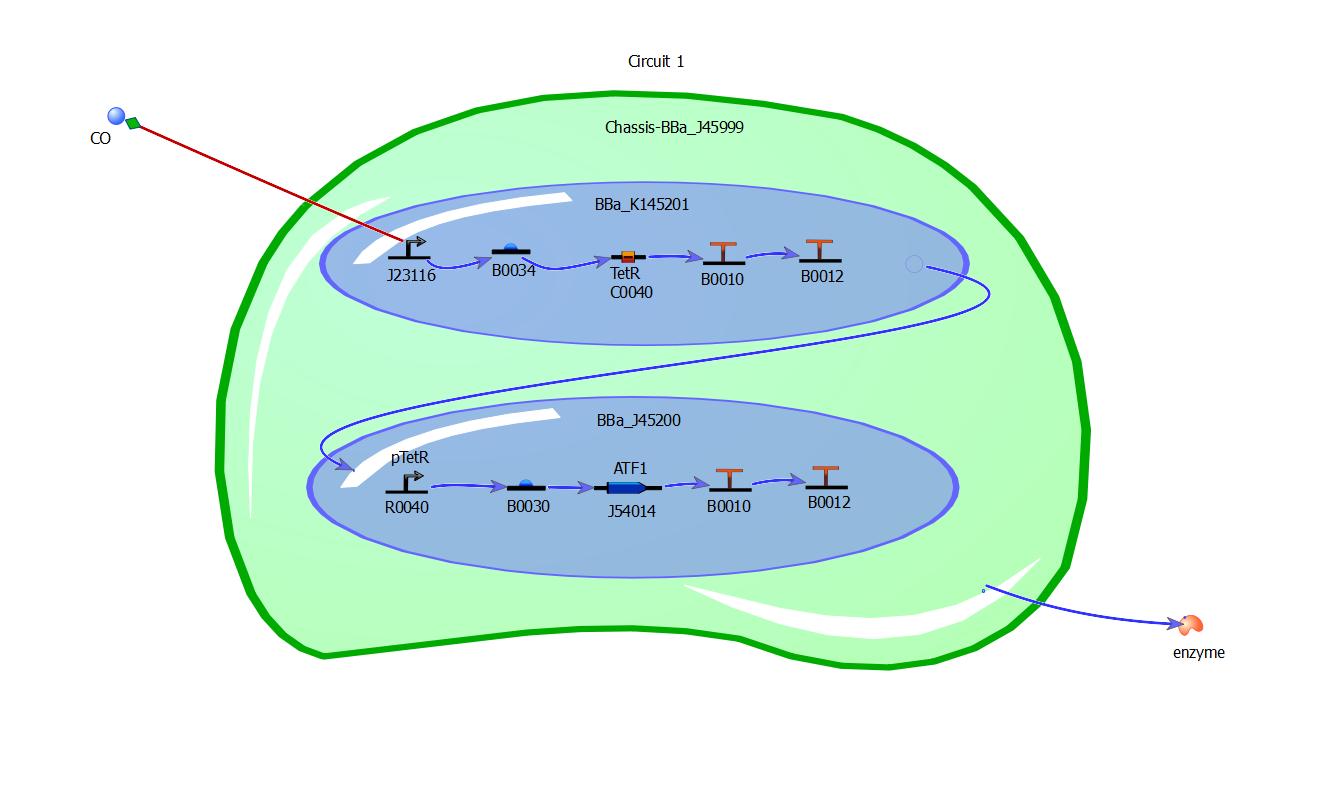CREATING THE GENETIC CIRCUIT
From 2012hs.igem.org
Creating the Genetic Circuit
Once we had our idea solidified, the next step was coming up with a circuit to make our idea into a reality. Using the TinkerCell program to create an example of the cell, we wanted to follow the KISS rule and keep things as simple as possible. The 2010 METU iGEM team created a part that successfully detected carbon monoxide, and contained a Lacl promoter, RBS, and CooA, but from that point what the output was seemed to be fairly open for change. We wanted the output smell to be very unpleasant and trigger a negative response, and decided indole, the smell naturally made by e. coli, would be an excellent choice. We chose tnaA, the indole producing gene, as the last major step in our genetic sequence, and an odorless chassis so that indole wouldn't be naturally produced by the detector.
Obstacles in creating the circuit were finding a tnaA producing gene (still working on that) and...
The parts chosen were all marked as 'working' in the parts registry, and most had the same assembly methods, making them compatible. Our major concerns are that we won't be able to find a tnaA gene by itself, or that the parts chosen won't work be compatible in practice.
Also, special thanks go out to our iGEM advisers, Alyssa Henning, !

Parts We are Considering
Initially, we were considering designing a genetic circuit that used the experienced carbon monoxide detector parts from the Turkey_METU 2010 collegiate iGEM Team along with an indole free chassis. To report the presence of CO, we were also considering using tnaA as an olfactory reporter. After further consideration, we decided that transforming an indole-free chassis with a gene that produces indole would be redundant so we have opted to pursue an alternative genetic circuit design.
Chassis: BBa_J45999
CooA: BBa_K352014 (CooA coupled with placI and RBS)
tnaA: (for indole production)
We wanted to detect CO by transforming a gene that will produce a malodorous scent, but have come across complications with accessing these smell devices and the safety of producing the smells. We are now considering using the banana generating device to produce a banana smell because we know how to produce this smell and it will be safe to use. Here are the several odor producing genes and smells we researched and have considering trying to use in our circuit:
Currently, our experiment
IPTG Promoter: BBa_R0010
For our theoretical procedure we would use:
CooA: BBa_K352011
Protocol
We are considering the following protocols for preparing our competent cells and preforming our transformation:
Here is the standard procedure we are considering for building our biobrick:
Click here to see our SAFETY page
 "
"